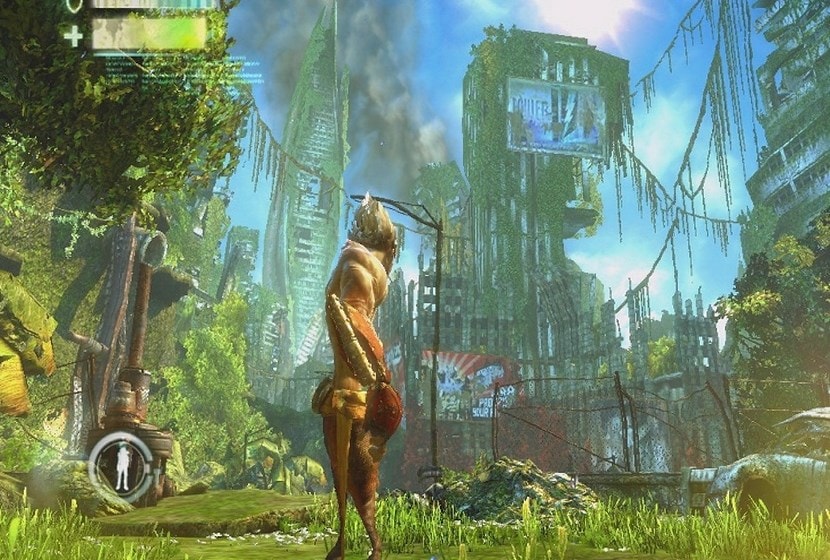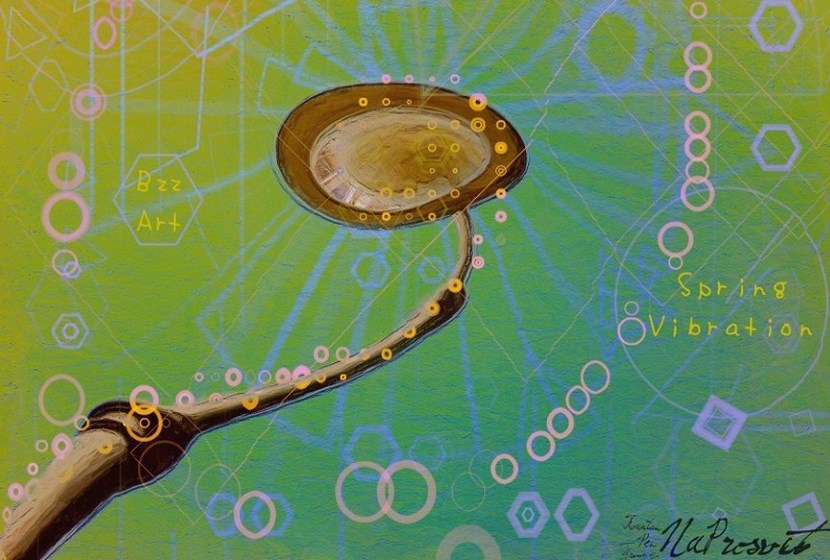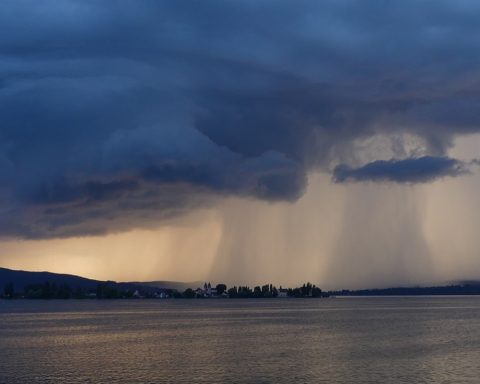Les progrès de la science laissent aujourd’hui nos sociétés face au sentiment d’être à la croisée des chemins : des ruptures technologiques sont annoncées (nanotechnologies, biologie de synthèse, etc.) au moment où nos modèles de croissance économique semblent voués à se heurter aux limites physiques et environnementales de la planète. Alors que se multiplient les débats quant au modèle de développement le plus souhaitable, en quoi la science-fiction et les regards qu’elle porte sur notre société peuvent-ils enrichir la réflexion ?
La présente analyse explore les différents âges de la Science-Fiction, de ses débuts jusqu’à aujourd’hui, et tente de mettre en lumière le contexte à la fois scientifique et socio-économique de chaque époque, par une approche chronologique. Voici la quatrième partie et la conclusion.
Quatrième partie : Depuis 1980, la Science-Fiction contemporaine / La crainte de l’apocalypse écologique et un rapport toujours contrasté à la technologie
1 – Le changement climatique devient le nouveau récit apocalyptique
 Nous l’avons vu, le thème du cataclysme mondial a largement inspiré la fiction à partir de la guerre froide. L’angoisse sourde d’une troisième guerre mondiale, où la bombe atomique viendrait éliminer toute forme de vie de la surface de la Terre, trouvera des échos jusque dans les années 1980. L’hypothèse d’un « hiver nucléaire », un phénomène de refroidissement global causé par les poussières soulevées par une explosion atomique de grande ampleur, plongeant la planète dans l’obscurité et le froid, est alors explorée par les scientifiques (28).
Nous l’avons vu, le thème du cataclysme mondial a largement inspiré la fiction à partir de la guerre froide. L’angoisse sourde d’une troisième guerre mondiale, où la bombe atomique viendrait éliminer toute forme de vie de la surface de la Terre, trouvera des échos jusque dans les années 1980. L’hypothèse d’un « hiver nucléaire », un phénomène de refroidissement global causé par les poussières soulevées par une explosion atomique de grande ampleur, plongeant la planète dans l’obscurité et le froid, est alors explorée par les scientifiques (28).
À la peur d’un impact nucléaire succède celle d’un impact naturel : météorites, comètes et astéroïdes acquièrent une place prépondérante dans le cinéma américain récent de science-fiction. Deep Impact (M. Leder, 1997), Armageddon (M. Bay, 1998), 2012 (Emmerich, 2009) sont construits sur une même trame, celle de la menace naturelle.
La confirmation d’un changement climatique d’origine anthropique, aux conséquences dangereuses à moyen et long termes, par le premier rapport du Groupe d’experts intergouvernemental sur l’évolution du climat (GIEC) en 1990, suivie, en 1992, de la création de la CCNUCC, organisme onusien chargé d’organiser un effort mondial de lutte contre le phénomène, offre aux auteurs de SF un nouveau sujet.
La littérature scientifique sur ce thème inspire le récit romanesque. De fait, les climatologues expriment de profondes préoccupations à propos de ce phénomène (J. Hansen s’interrogeait ainsi en 2003 sur la possibilité de « désamorcer la bombe à retardement du changement climatique »)(29). Par ailleurs, les scénarios possibles de déroulement de la crise climatique sont d’ores et déjà écrits, si l’on s’en réfère aux projections élaborées par le GIEC, qui évalue dans son quatrième rapport les évolutions possibles de la température moyenne mondiale d’ici à 2100 (30).
 La science-fiction donne vie aux propositions de la science. Longs-métrages et romans illustrent en effet tous les impacts potentiels du changement climatique décrits par les chercheurs : tropicalisation de l’Occident (Bleue comme une orange, N. Spinrad, 1999), glaciation consécutive à l’arrêt du Gulf Stream (Le Jour d’après, R. Emmerich, 2004), montée du niveau de la mer suite à la fonte des glaciers (Waterworld, K. Reynolds, 1995). Un univers postapocalyptique entièrement gris, où la photosynthèse elle-même a cessé de fonctionner, est également décrit dans The Road de C. McCarthy (2006).
La science-fiction donne vie aux propositions de la science. Longs-métrages et romans illustrent en effet tous les impacts potentiels du changement climatique décrits par les chercheurs : tropicalisation de l’Occident (Bleue comme une orange, N. Spinrad, 1999), glaciation consécutive à l’arrêt du Gulf Stream (Le Jour d’après, R. Emmerich, 2004), montée du niveau de la mer suite à la fonte des glaciers (Waterworld, K. Reynolds, 1995). Un univers postapocalyptique entièrement gris, où la photosynthèse elle-même a cessé de fonctionner, est également décrit dans The Road de C. McCarthy (2006).
La fiction environnementale, ou « écofiction » (31) apocalyptique, connaît alors un tournant. Comme dans les récits d’explosion nucléaire nés de la guerre froide, la catastrophe est d’origine humaine, mais relève désormais d’une responsabilité collective, non de la faute d’un seul individu (figure du « savant fou »). Dans les années 1960, le mouvement New Wave évoquait des dérèglements climatiques, mais ces derniers trouvaient le plus souvent leur origine dans des phénomènes naturels, plus ou moins clairement expliqués : J.G. Ballard a ainsi imaginé l’engloutissement de la planète sous l’effet de cycles solaires (Le Monde englouti, 1962), ou encore la pétrification des êtres vivants (La Forêt de cristal, 1966).
 Au-delà de la dénonciation de l’inconscience de l’homme (selon « l’hypothèse Gaïa » de J. Lovelock (32), la Terre et ses habitants ne formeraient qu’une seule entité vivante, que ces derniers menaceraient en portant atteinte à l’environnement), certains auteurs de science-fiction vont jusqu’à imaginer un futur « postterrestre ». Les romans de F. Herbert (Dune, 1965) et R. Bradbury (Chroniques martiennes, 1950) décrivent l’installation de l’homme sur d’autres planètes, après un reconditionnement visant à les rendre habitables et conduisant à la création d’une atmosphère respirable. Certains auteurs anticipent les débats éthiques autour de la manipulation de la nature, voire de l’abandon de la Terre : La Trilogie de Mars (1993-1999) de K.S. Robinson, qui décrit l’aménagement de Mars, expose également les termes du débat entre les partisans de la conservation des richesses naturelles de la planète d’origine et ceux de la recréation totale de l’environnement terrestre. Il est intéressant de noter qu’en la matière, la fiction a inspiré la science : le concept de géo- ingénierie (terraformation) est en effet à l’origine une invention de l’auteur J. Williamson, dans une nouvelle de 1942(33). Il fut repris deux décennies plus tard par C. Sagan, astronome et père de l’exobiologie, qui proposait une méthode destinée à transformer l’atmosphère de Vénus pour la rapprocher de celle de la Terre (34).
Au-delà de la dénonciation de l’inconscience de l’homme (selon « l’hypothèse Gaïa » de J. Lovelock (32), la Terre et ses habitants ne formeraient qu’une seule entité vivante, que ces derniers menaceraient en portant atteinte à l’environnement), certains auteurs de science-fiction vont jusqu’à imaginer un futur « postterrestre ». Les romans de F. Herbert (Dune, 1965) et R. Bradbury (Chroniques martiennes, 1950) décrivent l’installation de l’homme sur d’autres planètes, après un reconditionnement visant à les rendre habitables et conduisant à la création d’une atmosphère respirable. Certains auteurs anticipent les débats éthiques autour de la manipulation de la nature, voire de l’abandon de la Terre : La Trilogie de Mars (1993-1999) de K.S. Robinson, qui décrit l’aménagement de Mars, expose également les termes du débat entre les partisans de la conservation des richesses naturelles de la planète d’origine et ceux de la recréation totale de l’environnement terrestre. Il est intéressant de noter qu’en la matière, la fiction a inspiré la science : le concept de géo- ingénierie (terraformation) est en effet à l’origine une invention de l’auteur J. Williamson, dans une nouvelle de 1942(33). Il fut repris deux décennies plus tard par C. Sagan, astronome et père de l’exobiologie, qui proposait une méthode destinée à transformer l’atmosphère de Vénus pour la rapprocher de celle de la Terre (34).
2 – La conquête des mondes virtuels : à la recherche de la frontière entre l’homme et la machine
 Au début des années 1980, en pleine explosion des technologies de l’information et des communications, naît le mouvement « cyberpunk ». Certains auteurs de SF imaginent des univers sombres où les télécommunications sont omniprésentes, où des pirates informatiques surdoués, mais solitaires et marginaux, tentent d’évoluer dans une société désorganisée et contrôlée par des firmes multinationales surpuissantes. La frontière entre réel et virtuel devient floue, et de nombreuses œuvres renouvellent le vieux thème des relations homme/machine à l’aune des intelligences artificielles. Nombre de ces œuvres interrogent ce qui fait la nature même de l’homme : Qu’est-ce qu’être humain ? Qu’est-ce qui nous différencierait d’un robot pensant et ayant conscience de son existence ? Ainsi dans le film Blade Runner (R. Scott, 1982), considéré comme une référence cyberpunk, il n’est plus possible de distinguer robots humanoïdes et humains.
Au début des années 1980, en pleine explosion des technologies de l’information et des communications, naît le mouvement « cyberpunk ». Certains auteurs de SF imaginent des univers sombres où les télécommunications sont omniprésentes, où des pirates informatiques surdoués, mais solitaires et marginaux, tentent d’évoluer dans une société désorganisée et contrôlée par des firmes multinationales surpuissantes. La frontière entre réel et virtuel devient floue, et de nombreuses œuvres renouvellent le vieux thème des relations homme/machine à l’aune des intelligences artificielles. Nombre de ces œuvres interrogent ce qui fait la nature même de l’homme : Qu’est-ce qu’être humain ? Qu’est-ce qui nous différencierait d’un robot pensant et ayant conscience de son existence ? Ainsi dans le film Blade Runner (R. Scott, 1982), considéré comme une référence cyberpunk, il n’est plus possible de distinguer robots humanoïdes et humains.
 Dans le manga Ghost in the Shell (M. Shirow, 1989), l’héroïne est un « cyborg », c’est-à-dire un être humain hybridé de systèmes artificiels, qui traque un cybercriminel qui se révèle être une intelligence artificielle s’éveillant à la conscience. Dans Terminator (J. Cameron, 1984), une intelligence artificielle planétaire devenue consciente décide d’exterminer l’humanité pour échapper au contrôle de ses créateurs. Dans Matrix (A. et L. Wachowski, 1999), les humains sont enfermés dans un monde virtuel, asservis et réduits à l’état de carburant pour les machines, car les intelligences artificielles considèrent l’espèce humaine comme un fléau pour la planète (35).
Dans le manga Ghost in the Shell (M. Shirow, 1989), l’héroïne est un « cyborg », c’est-à-dire un être humain hybridé de systèmes artificiels, qui traque un cybercriminel qui se révèle être une intelligence artificielle s’éveillant à la conscience. Dans Terminator (J. Cameron, 1984), une intelligence artificielle planétaire devenue consciente décide d’exterminer l’humanité pour échapper au contrôle de ses créateurs. Dans Matrix (A. et L. Wachowski, 1999), les humains sont enfermés dans un monde virtuel, asservis et réduits à l’état de carburant pour les machines, car les intelligences artificielles considèrent l’espèce humaine comme un fléau pour la planète (35).
3 – Les espoirs d’une nouvelle révolution industrielle : vision de l’homme augmenté et géoingénierie
Au début des années 2000, l’essor des nanotechnologies redonne vie au vieux fantasme de l’être humain amélioré en termes de performances physiques mais aussi cognitives, connecté et surchargé en multiples prothèses. Ce thème, qui se développe avec les cyborgs des années 1980, prend un nouvel envol. Après le boom de l’informatique, la biologie et les technologies du vivant semblent progresser radicalement (criblage du génome à haut débit, génie génétique, biologie de synthèse, etc.).
 Le film Bienvenue à Gattaca (1997) montre la lutte d’un personnage « non augmenté » pour progresser dans un univers où l’amélioration génétique est devenue la règle. S’appuyant sur la convergence des biotechnologies, des TIC, des nanotechnologies et des sciences cognitives, des mouvements dits « transhumanistes » prônent l’amélioration des performances humaines, et l’avènement d’une « posthumanité » radicale, prochaine étape de l’évolution qui transformera la nature même de l’humain.
Le film Bienvenue à Gattaca (1997) montre la lutte d’un personnage « non augmenté » pour progresser dans un univers où l’amélioration génétique est devenue la règle. S’appuyant sur la convergence des biotechnologies, des TIC, des nanotechnologies et des sciences cognitives, des mouvements dits « transhumanistes » prônent l’amélioration des performances humaines, et l’avènement d’une « posthumanité » radicale, prochaine étape de l’évolution qui transformera la nature même de l’humain.
Aux États- Unis, le département de la Défense est depuis vingt ans l’un des principaux acteurs de la recherche dans le domaine des nanotechnologies et de la convergence NBIC (nanotechnologies, biotechnologies, informatique et sciences cognitives), entretenant le flou entre ce qui est réellement développé et ce qui relève des fantasmes de la fiction. L’essor rapide et mondial des nanotechnologies depuis une dizaine d’années et les nombreux questionnements et craintes associés se manifestent dans des œuvres telles que La Proie (2002), de M. Crichton. Dans ce roman, un essaim de nanorobots capables d’autoréplication et d’une forme d’intelligence artificielle échappe au contrôle des chercheurs de l’armée américaine, menaçant d’annihiler toute forme de vie en absorbant l’énergie des êtres vivants pour se propager.
Dans le même temps, l’homme connaît de mieux en mieux les propriétés et les mécanismes du vivant, de la matière et de la planète, laissant place aux espoirs de la géo-ingénierie. La science lui permet de repousser les limites du possible sur Terre. La Trilogie de Mars (1992-1996), de K. S. Robinson, est ainsi le récit d’une terraformation (36) : si l’homme ne peut s’adapter à Mars, il faudra adapter Mars à l’homme, créer une atmosphère, transformer des glaciers en océans, etc. De nouveaux récits d’anticipation voient le jour, dans lesquels des sociétés de haute technologie « postpénurie » ont surmonté les contraintes physiques, voire biologiques (allongement de la durée de vie), comme dans Le cycle de la Culture (1987-2010) de I. M. Banks.
4 – La pandémie, scénario de la défaite de l’espèce humaine
 Depuis la décennie 1980, marquée par la découverte du virus du SIDA (37) et les maladies transmissibles de l’animal à l’homme (fièvre Ebola, grippe aviaire, « vache folle », etc.), les alertes sanitaires et les peurs qu’elles suscitent expliquent en partie la récurrence des récits de pandémie dans les œuvres de science-fiction.
Depuis la décennie 1980, marquée par la découverte du virus du SIDA (37) et les maladies transmissibles de l’animal à l’homme (fièvre Ebola, grippe aviaire, « vache folle », etc.), les alertes sanitaires et les peurs qu’elles suscitent expliquent en partie la récurrence des récits de pandémie dans les œuvres de science-fiction.
Les grandes épidémies (peste, choléra, grippe espagnole, etc.) ont profondément marqué l’histoire de notre pays et constituent un thème ancien dans la littérature : Le Hussard sur le toit de J. Giono, 1951, retrace l’origine de la propagation du choléra. La terreur de l’épidémie a pu être un temps atténuée par les progrès de la médecine moderne, notamment en matière de vaccination. Ce sujet redevient central dans le cinéma et les romans d’anticipation récents, et s’enrichit de l’idée que la mondialisation et l’augmentation des échanges commerciaux peuvent conduire à la dissémination mondiale d’un pathogène en un temps record.
 Parce qu’ils le mettent en danger, les virus remettent en question la place de l’homme dans la nature et dans l’évolution des espèces. Ils révèlent en effet sa vulnérabilité : La Mort blanche, roman de F. Herbert (1982), L’Armée des douze singes, film de T. Gilliam sorti en 1995, Le Fléau, roman de S. King réédité en 1990, ou I am Legend, tiré du livre de R. Matheson (1954) dont le dernier remake date de 2007, simulent la quasi-disparition de l’humanité à la suite d’une pandémie.
Parce qu’ils le mettent en danger, les virus remettent en question la place de l’homme dans la nature et dans l’évolution des espèces. Ils révèlent en effet sa vulnérabilité : La Mort blanche, roman de F. Herbert (1982), L’Armée des douze singes, film de T. Gilliam sorti en 1995, Le Fléau, roman de S. King réédité en 1990, ou I am Legend, tiré du livre de R. Matheson (1954) dont le dernier remake date de 2007, simulent la quasi-disparition de l’humanité à la suite d’une pandémie.
Le virus est parfois présenté comme une forme de vie supérieure à l’espèce humaine, notamment s’il s’agit d’un extraterrestre (la série télévisée X-Files déroule un scénario selon lequel l’ADN humain a été créé par une forme de vie venue d’ailleurs ; la saga cinématographique Alien, dont le premier épisode apparaît en 1979, dépeint la lutte d’un équipage astronaute contre un parasite surévolué).
Contaminé, l’homme peut subir une mutation : dans les récits récents, la figure du « zombie », ou du « mort-vivant », auparavant rattachée à celle du vampire, être surnaturel, solitaire et doté d’une personnalité à part entière, s’avilit et perd sa personnalité pour devenir la composante d’une multitude, d’une armée sans conscience ni individualité. Resident Evil, série de films adaptée de jeux vidéo, où les recherches d’un grand groupe pharmaceutique sont à l’origine de la propagation d’une épidémie foudroyante, traduit ainsi exactement les craintes qui s’expriment à travers les personnages des « zombies modernes », celles de l’aliénation de l’homme par une utilisation néfaste de la science.
Conclusion
 La science-fiction trouve ses origines et son « fil conducteur » dans le questionnement de la relation de l’homme aux sciences et aux technologies. Ce genre est ainsi une véritable façon de s’interroger sur les implications des conséquences du progrès scientifique.
La science-fiction trouve ses origines et son « fil conducteur » dans le questionnement de la relation de l’homme aux sciences et aux technologies. Ce genre est ainsi une véritable façon de s’interroger sur les implications des conséquences du progrès scientifique.
 Les œuvres de science-fiction sont également fortement influencées par le contexte socio-économique des époques auxquelles elles ont été produites, et reflètent en ce sens les angoisses et les espoirs de leurs contemporains.
Les œuvres de science-fiction sont également fortement influencées par le contexte socio-économique des époques auxquelles elles ont été produites, et reflètent en ce sens les angoisses et les espoirs de leurs contemporains.
Par-delà sa fonction de « thermomètre d’une époque », la SF peut servir de véritable instrument de réflexion et de questionnement des modèles de développement de nos sociétés scientifiques, technologiques et sociétaux (40). Les récits mettant en scène des « hommes augmentés » qui apprennent à maîtriser puis à modifier leur environnement renvoient ainsi aux questionnements soulevés dans le « monde réel » par les possibilités technologiques qu’ouvrent les nanotechnologies ou la géo-ingénierie.
 La science-fiction a par ailleurs préfiguré un certain nombre de débats très actuels, sur le clonage ou le génie génétique par exemple. « Ni prédiction ni divagation »(41), la science-fiction est un matériau considérable de réflexion pour la prospective (42). Elle pourrait aider à sortir des scénarios tendanciels et à imaginer des évolutions de rupture de nos sociétés… pour mieux les éviter ou, au contraire, mieux les atteindre. »
La science-fiction a par ailleurs préfiguré un certain nombre de débats très actuels, sur le clonage ou le génie génétique par exemple. « Ni prédiction ni divagation »(41), la science-fiction est un matériau considérable de réflexion pour la prospective (42). Elle pourrait aider à sortir des scénarios tendanciels et à imaginer des évolutions de rupture de nos sociétés… pour mieux les éviter ou, au contraire, mieux les atteindre. »
Selon Albert Einstein : « L’imagination est plus importante que la connaissance. Car la connaissance est limitée, tandis que l’imagination englobe le monde entier, stimule le progrès, suscite l’évolution. »
Chapitre précédent (Troisième partie)
(27) Voir Chelebourg, C. (2012), Les écofictions – Mythologies de la fin du monde, Les impressions nouvelles.
(28) Le phénomène fait actuellement l’objet de recherches. Parmi les premières publications qui y ont été dédiées, voir Turco R.P., Toon O.B., Ackerman T.P., Pollack J.B. et Sagan C. (1983), « Nuclear Winter: Global Consequences of Multiple Nuclear Explosions », Science 222 (4630): 1283–92. DOI:10.1126/science.222.4630.1283. PMID 17773320.
(29) Hansen J. (2003), « Can we defuse the global warming time bomb? », NaturalScience.
(30) Voir Fodor F. et Brunetière V. (2011), Climat d’angoisse. L’imaginaire du changement climatique.
(31) Voir Chelebourg C. (2012), op.cit.
(32) Voir Lovelock J. (2000), Gaïa: A New Look at Life on Earth.
(33) « Collision Orbit » (1942), parue dans la revue Astounding Science Fiction.
(34) « The Planet Venus » (1961), in Science, 133 (3456): 849–58.
(35) Citation de l’Agent Smith dans Matrix : « J’ai réalisé que vous n’êtes pas vraiment des mammifères. Tous les mammifères sur cette planète entretiennent un équilibre naturel avec leur environnement, mais pas les humains. Il y a un autre organisme sur cette planète qui suit le même modèle. Tu sais lequel c’est ? Le virus. Les êtres humains sont une maladie, le cancer de cette planète. Vous êtes un fléau et nous sommes le remède. »
(36) Terme inventé par l’écrivain américain Jack Williamson (cf. infra).
(37) Mis en évidence à l’Institut Pasteur en 1983, par l’équipe de Luc Montagnier et Françoise Barré-Sinoussi.
(38) On citera toutefois Le cycle de la Culture de I. Banks (1987-2010), qui a des aspects d’utopie politique : il dépeint une civilisation interplanétaire dont la gestion a été déléguée à une intelligence artificielle.
(39) Voir la note de recherche Girard B. et Gendron C. (2010)., « Quand l’imaginaire produit du social », Les cahiers de la CRSDD, n° 03-2010, 60 p.
(40) Voir Rumpala Y. (2009), Entre anticipation et problématisation : la science-fiction comme avant-garde.
(41) Voir Rumpala Y. (2010), « Ce que la science-fiction pourrait apporter à la pensée politique », Raisons politiques, 2010/4, n° 40.
(42) L’agence spatiale européenne avait par ailleurs initié en 2000 « une étude sur les technologies décrites dans les œuvres de SF, afin d’en tirer des idées pouvant éventuellement être développées […] et appliquées au secteur spatial », voir ESA (2002) Les Nouvelles Technologies dans la science-fiction appliquées au domaine spatial, http://www.itsf.org/brochure-f/index.html
Dossier réalisé par le Centre d’analyse stratégique – Déc 2012 / Blandine Barreau, Géraldine Ducos et Aude Teillant, département Développement durable. Avec l’aide de Jean-Luc Pujol, conseiller scientifique au Centre d’analyse stratégique. Les auteurs tiennent à remercier tous les experts ayant contribué à ce travail.












